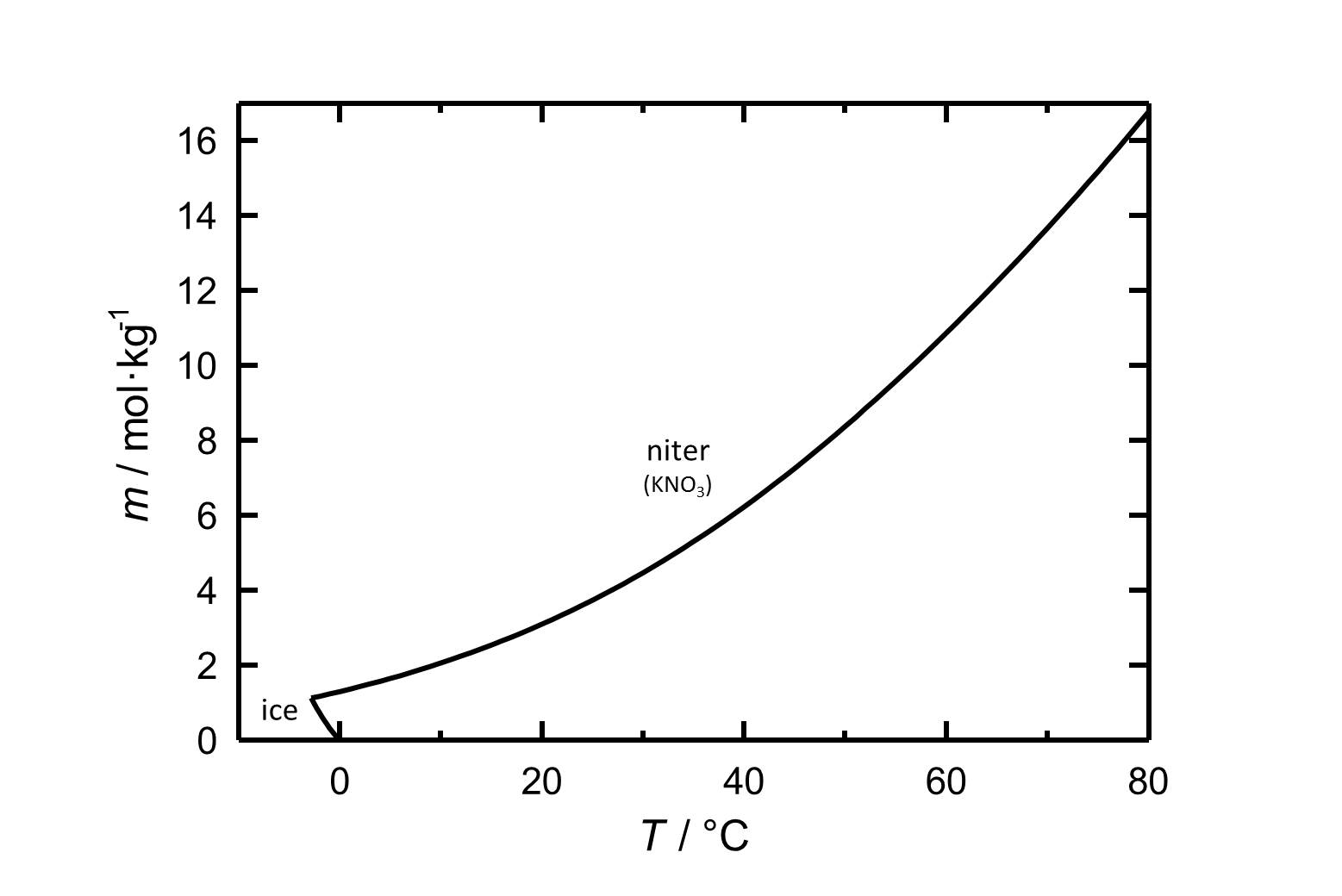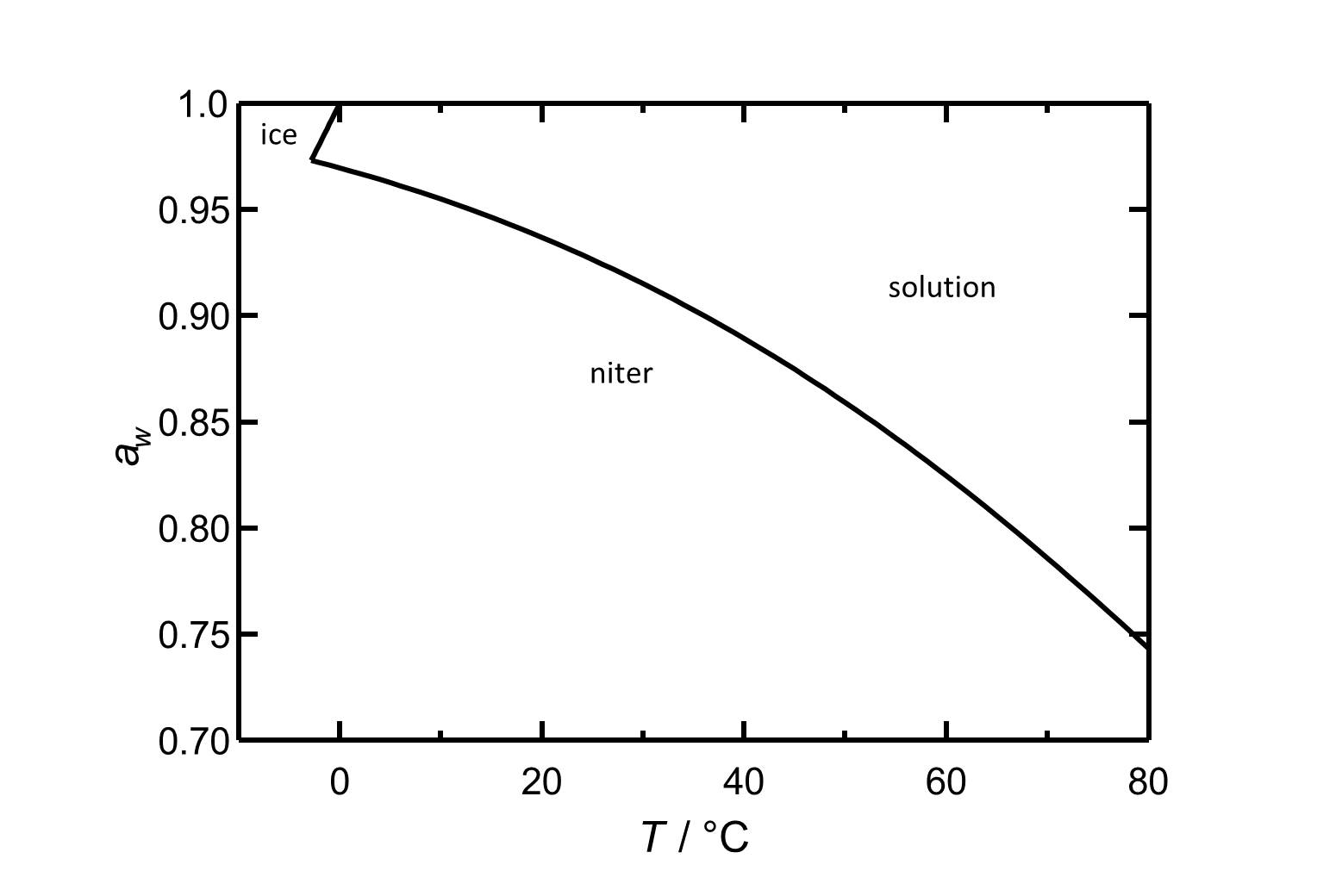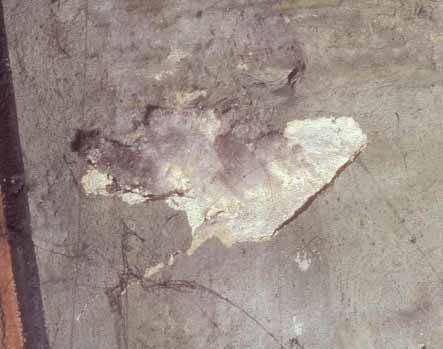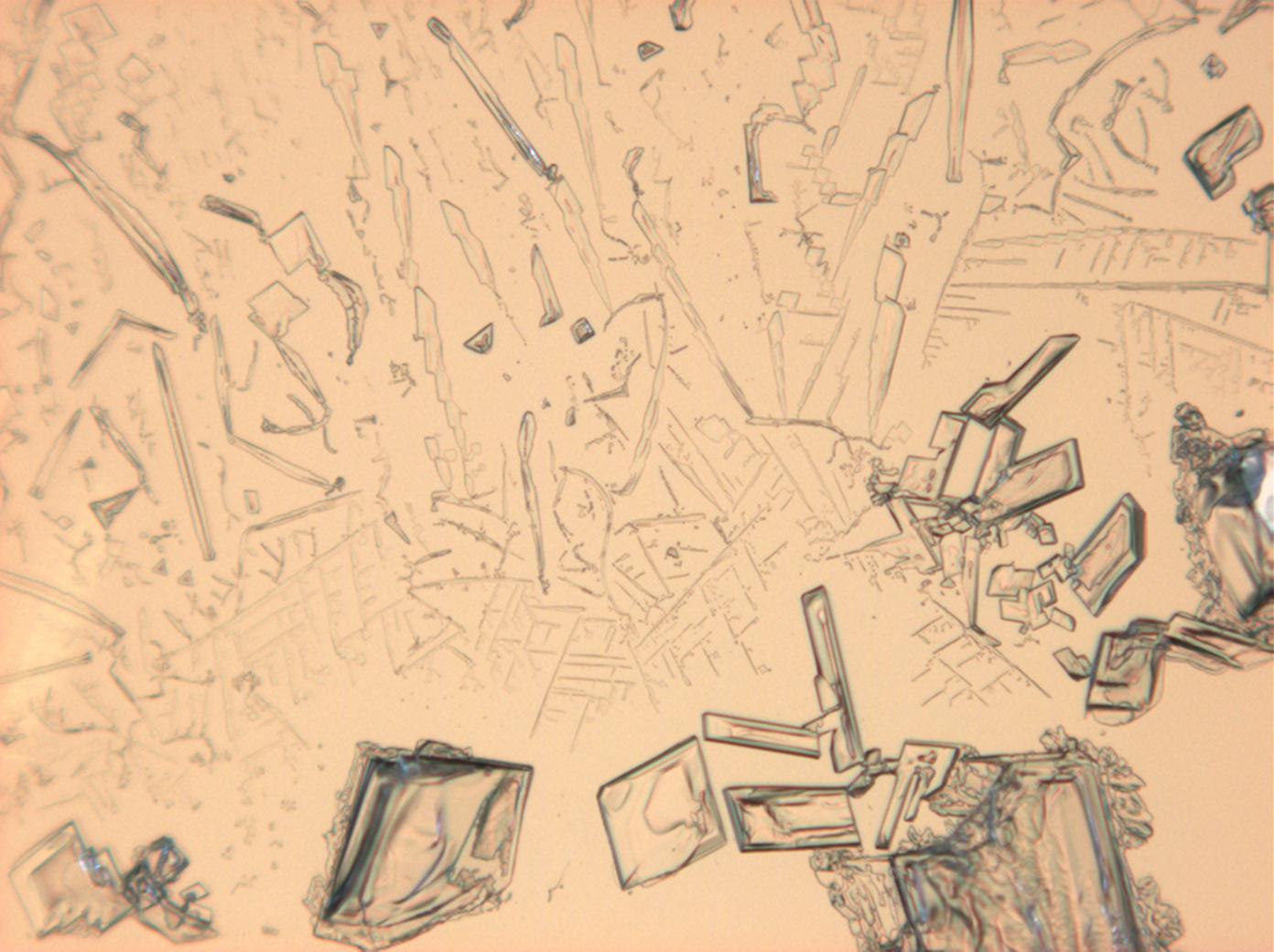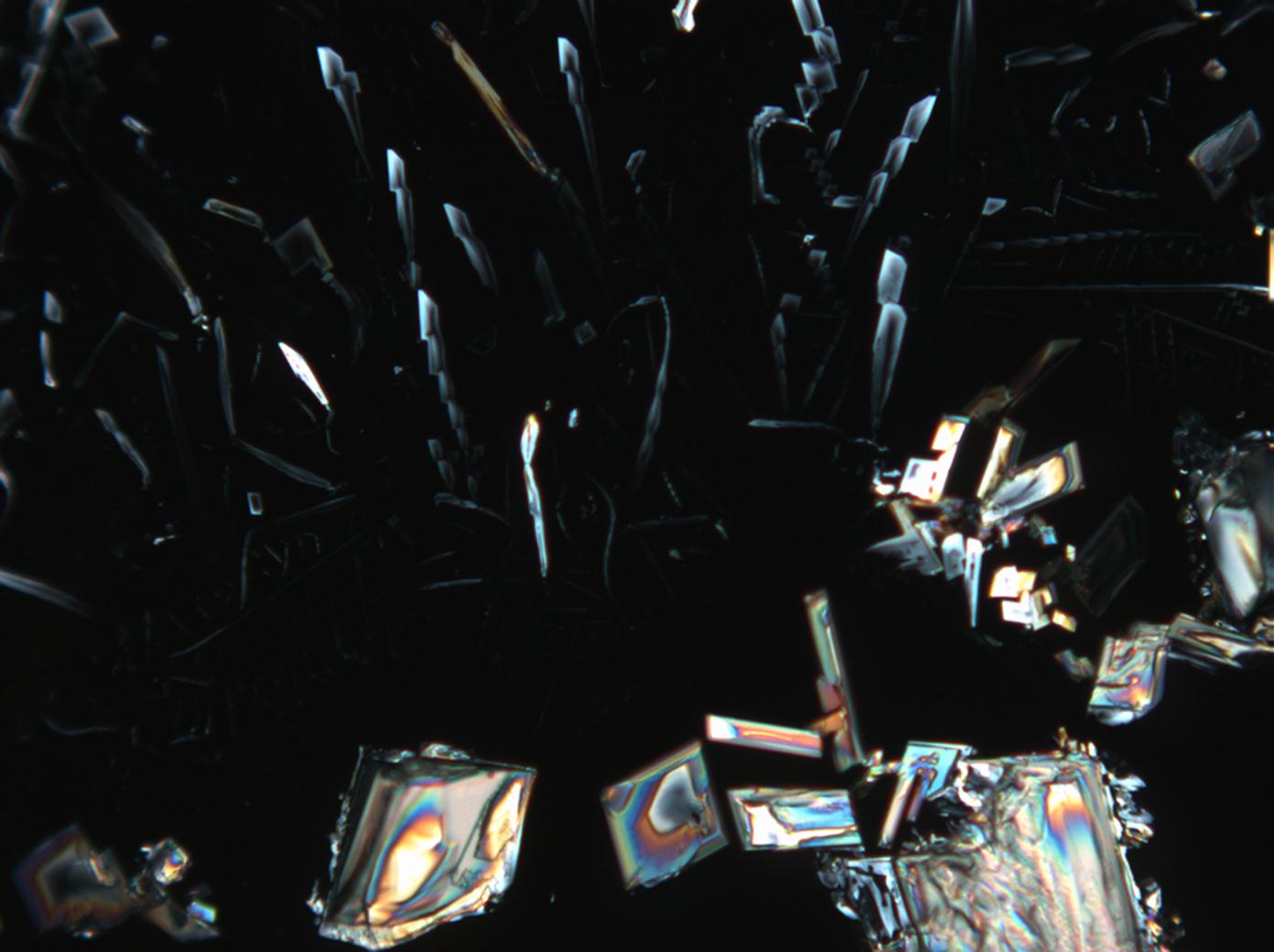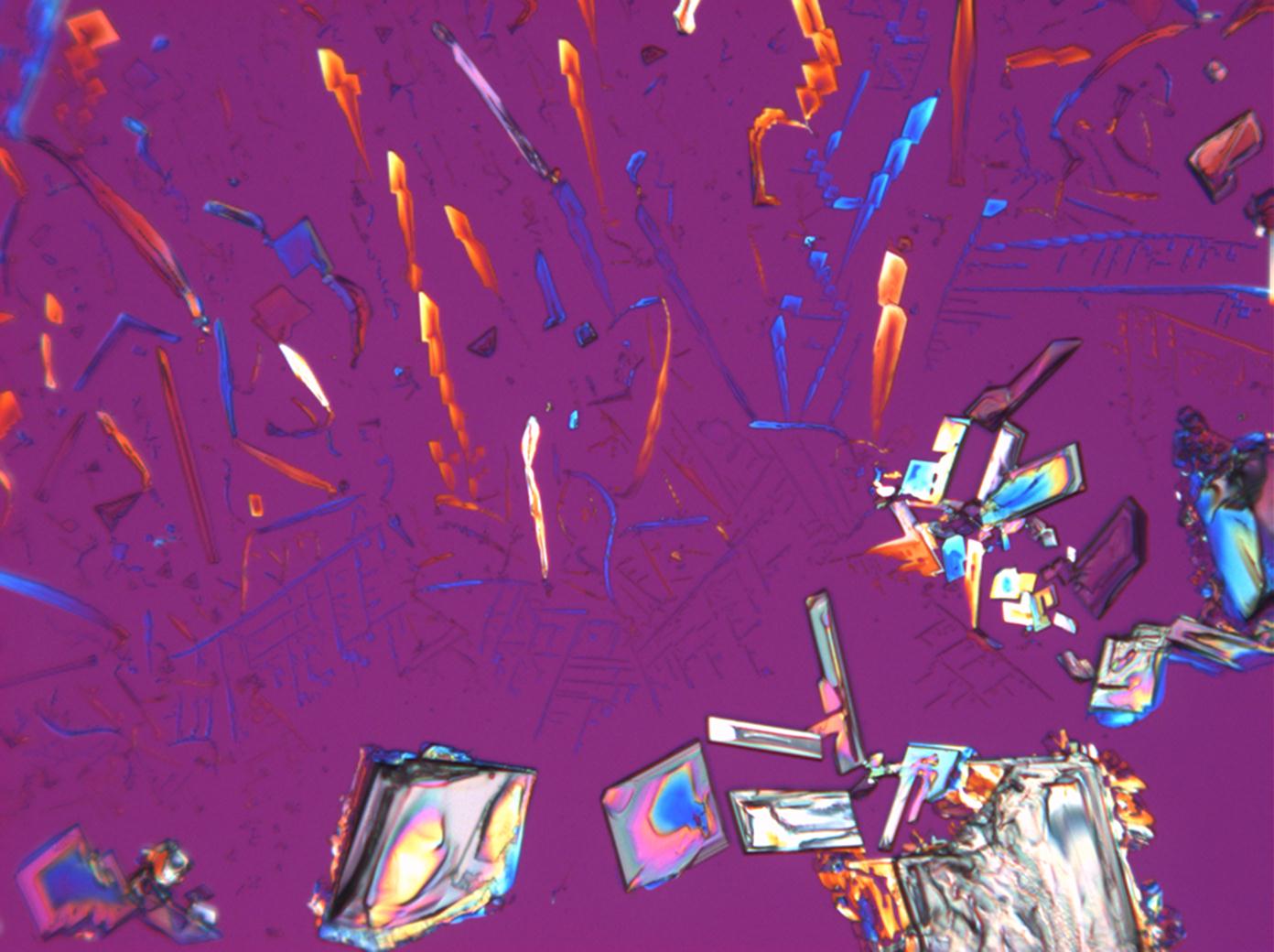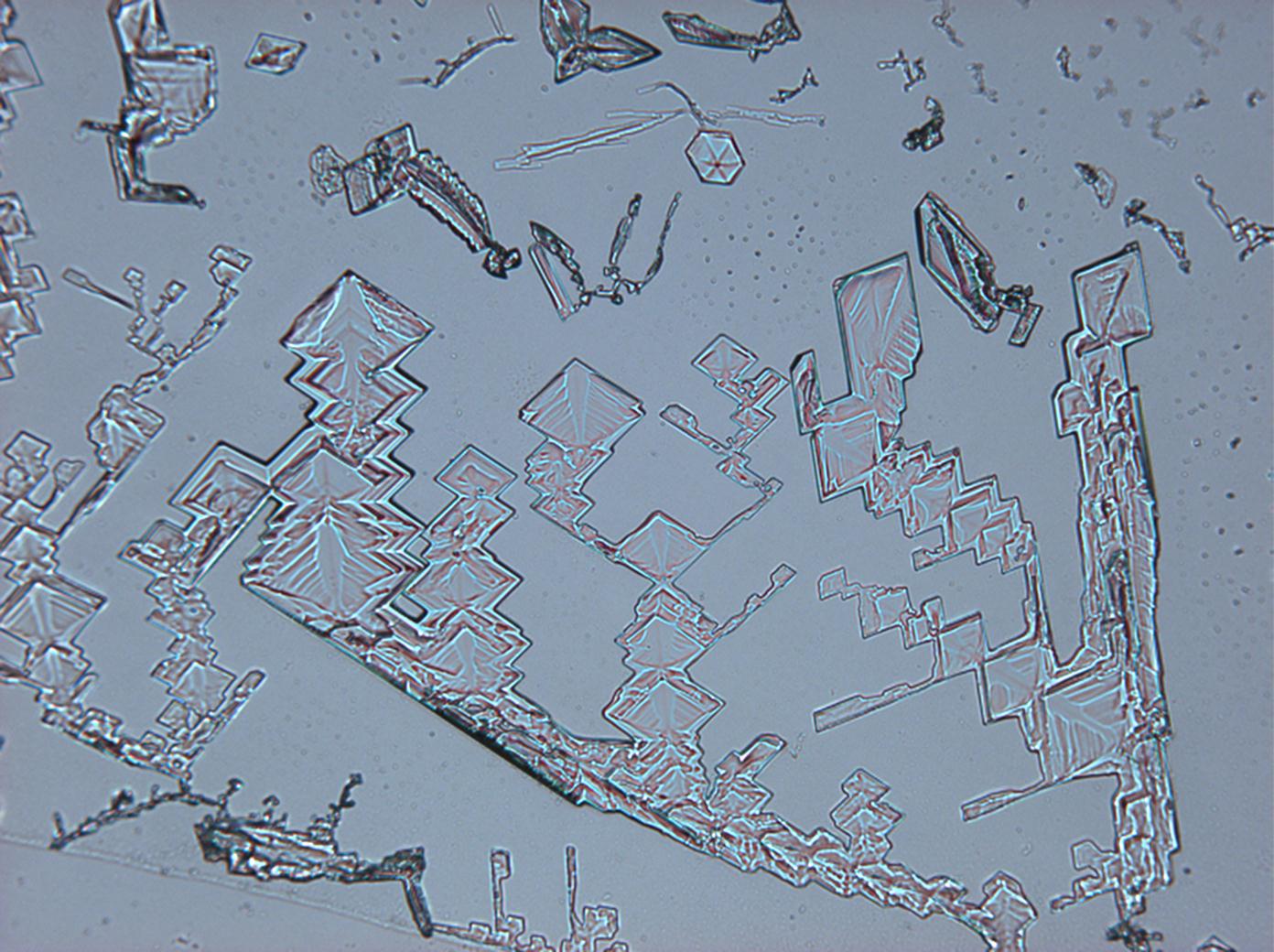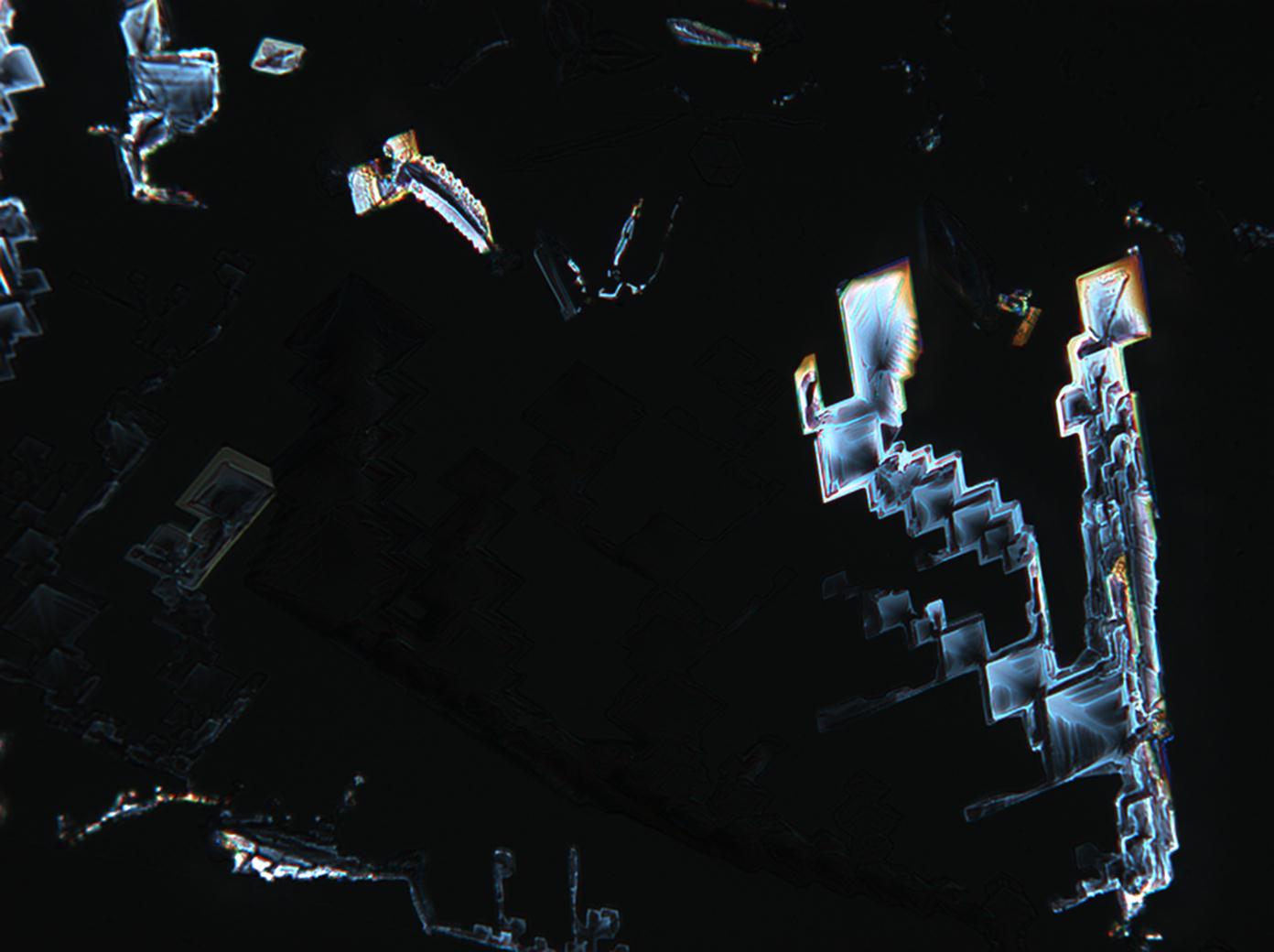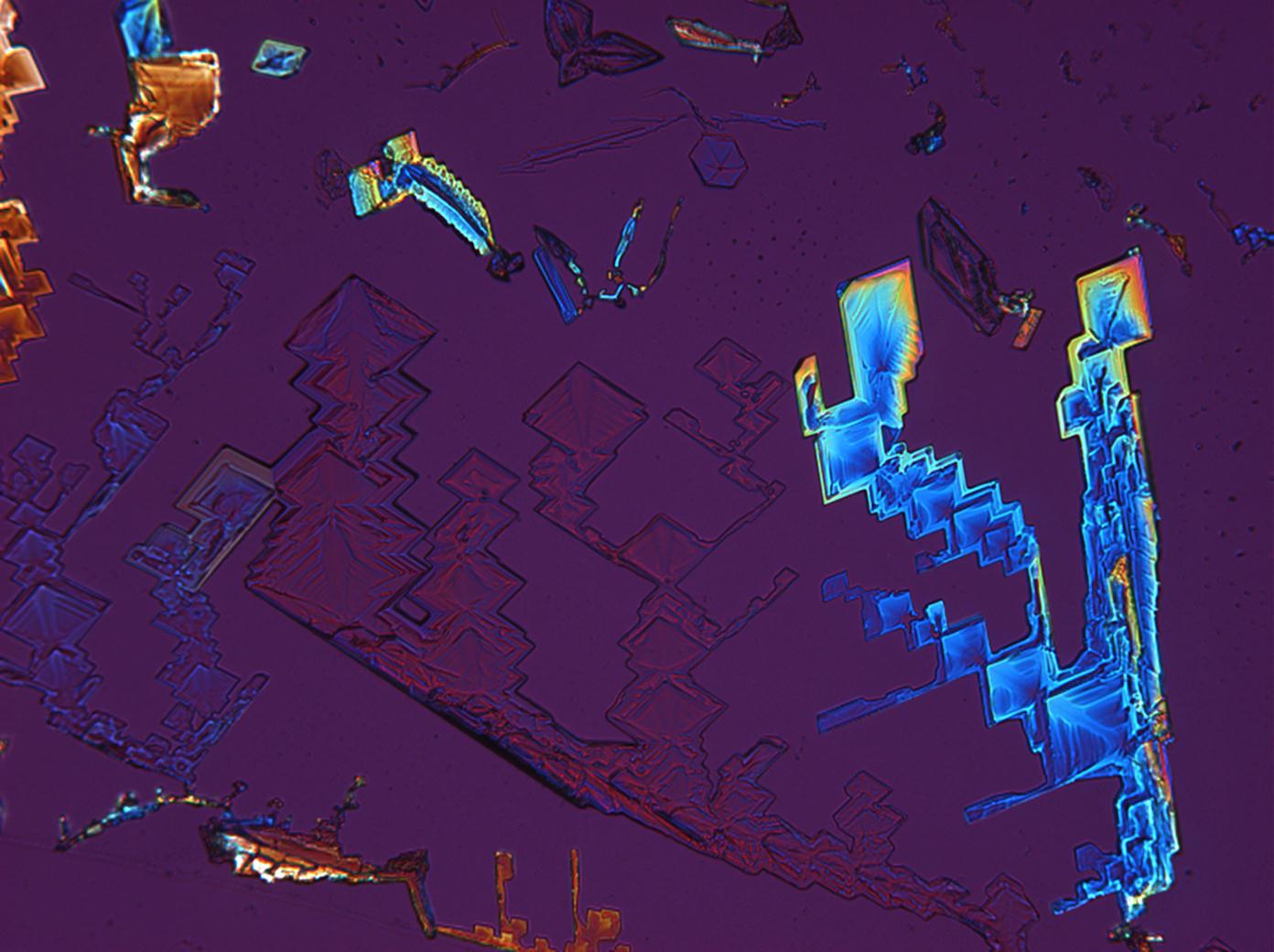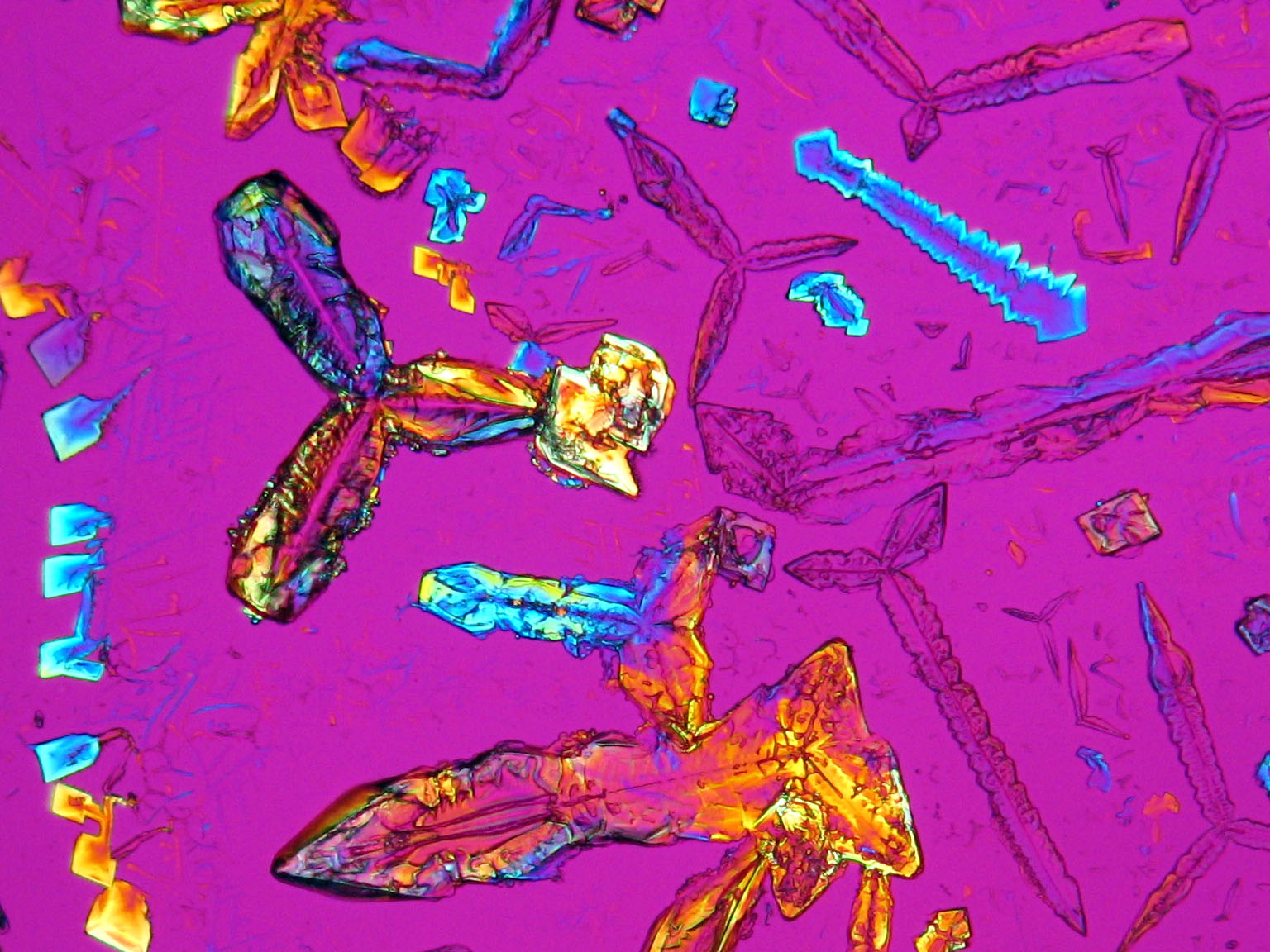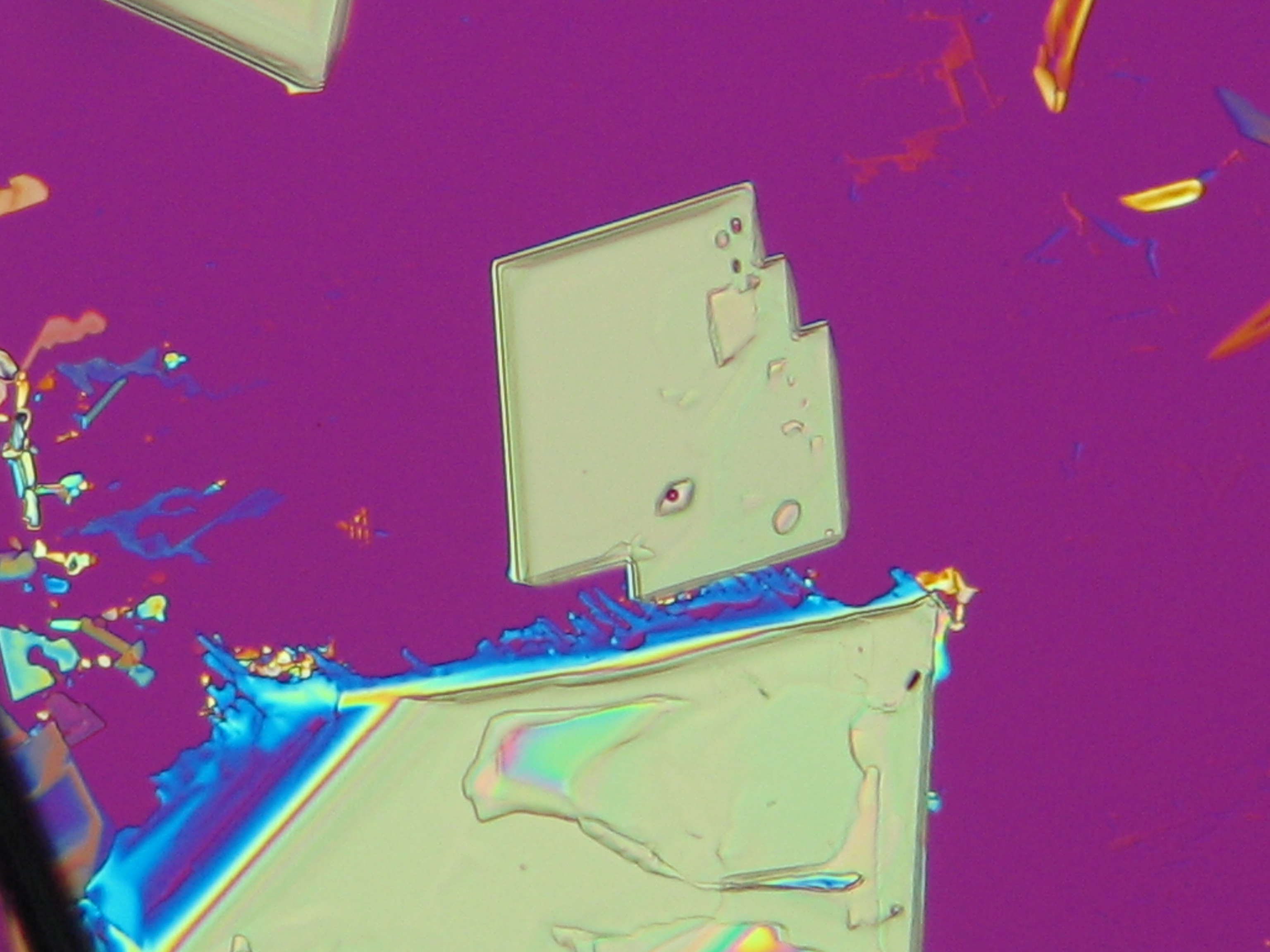Niter: Difference between revisions
No edit summary |
|||
| (45 intermediate revisions by 8 users not shown) | |||
| Line 1: | Line 1: | ||
Authors: [[user:Hschwarz|Hans-Jürgen Schwarz]], Nils Mainusch <br> | |||
Authors: [[user:Hschwarz|Hans-Jürgen Schwarz]], Nils Mainusch | |||
Translation of the [http://193.175.110.91/salzwiki/index.php?title=Niter&oldid=11136 German Version] by Hans-Jürgen Schwarz | Translation of the [http://193.175.110.91/salzwiki/index.php?title=Niter&oldid=11136 German Version] by Hans-Jürgen Schwarz | ||
<br>back to [[Nitrate]] | <br>back to [[Nitrate]] | ||
{{Infobox_Salt | {{Infobox_Salt | ||
|Footnote=<ref>http://webmineral.com/data/Niter.shtml gelesen 28.07.2010</ref><ref>http://www.mindat.org/min-2917.html</ref><ref>http://www.mineralienatlas.de/lexikon/index.php/MineralData?mineral=Niter</ref> | |Footnote=<ref>http://webmineral.com/data/Niter.shtml gelesen 28.07.2010</ref><ref>http://www.mindat.org/min-2917.html</ref><ref>http://www.mineralienatlas.de/lexikon/index.php/MineralData?mineral=Niter</ref> | ||
|photo= KNO3 I (6)-klein.jpg | |photo= [[File:KNO3 I (6)-klein.jpg|300px]] | ||
|mineralogical_Name=Nitrokalite, Niter, Kalisalpeter | |mineralogical_Name=Nitrokalite, Niter, Kalisalpeter | ||
|chemical_Name =Potassium nitrate | |chemical_Name =Potassium nitrate | ||
|Trivial_Name= Saltpetre , Nitrate of potash, Vesta powder, Kali-Salpeter, Kehrsalpeter, Konversionssalpeter | |Trivial_Name= Saltpetre , Nitrate of potash, Vesta powder, Kali-Salpeter, Kehrsalpeter, Konversionssalpeter | ||
|chemical_Formula =KNO<sub>3</sub> | |chemical_Formula =KNO<sub>3</sub> | ||
|Hydratforms =none| | |Hydratforms =none | ||
|Crystal_System = orthorhombic | |||
|Deliqueszenzhumidity= | |Crystal_Structure= orthorhombic - dipyramidal; 2/m 2/m 2/m , see <ref>http://webmineral.com/jpowd/JPX/jpowd.php?target_file=Niter.jpx; Viewed on 15/04/2011</ref> | ||
|Solubility= | |Deliqueszenzhumidity=93.7 % | ||
|Density=2 | |Solubility=3.108 mol/kg | ||
|MolVolume=48 | |Density=2.103 g/cm<sup>3</sup> | ||
|Molweight =101 | |MolVolume=48.04 cm<sup>3</sup>/mol | ||
|Molweight =101.10 g/mol | |||
|Transparency =translucent to transparent | |Transparency =translucent to transparent | ||
|Cleavage=very good on {001}; good on {010}h<ref>ttp://en.wikipedia.org/wiki/Niter; Viewed on 15/04/2011</ref> | |Cleavage=very good on {001}; good on {010}h<ref>ttp://en.wikipedia.org/wiki/Niter; Viewed on 15/04/2011</ref> | ||
|Crystal_Habit=include crusts and acicular crystals formed as efflorescence on cave and mine walls <ref>http://www.galleries.com/minerals/carbonat/niter/niter.htm; Viewed on 15/04/2011</ref> | |Crystal_Habit=include crusts and acicular crystals formed as efflorescence on cave and mine walls <ref>http://www.galleries.com/minerals/carbonat/niter/niter.htm; Viewed on 15/04/2011</ref> | ||
|Twinning= | |Twinning= | ||
|Refractive_Indices =α = 1 | |Refractive_Indices =α = 1.335<br>β = 1.505<br>γ = 1.506 | ||
|Birefringence=Δ = 0 | |Birefringence=Δ = 0.171 | ||
|optical_Orientation=biaxial negative | |optical_Orientation=biaxial negative | ||
|Pleochroism= | |Pleochroism= | ||
|Dispersion = weak, r < v | |Dispersion = weak, r < v | ||
|Phase_Transition= | |Phase_Transition= | ||
|chemBehavior=easily soluble in water | |chemBehavior=easily soluble in water | ||
|Comments= | |Comments= | ||
|Literature = <bib id="Steiger.etal:2014"/> <bib id="Robie.etal:1978"/> | |||
}} | }} | ||
== Abstract == | == Abstract == | ||
Niter is one of the most important salts | Niter is one of the most important salts responsible for damages of building materials and murals. It is mostly observed indoors, often found in cotton-like efflorescence. Pictures, microphotographs and examples of their habits illustrate and complement the description. | ||
== General == | == General == | ||
Potassium | Potassium nitrate was an important ingredient in the production of gun powder and explosives in the 19th century, were obtained from natural sources potash deposits contain a maximum of 10% KNO<sub>3</sub> among various other potassium salts) and obtained through the reaction of sodium nitrate with potassium chloride. Currently various methods of large-scale production of this salt are based on the reaction between crude potassium salts and nitric acid. | ||
<br>Potassium nitrate is also used as a fertilizer in agriculture.<br> | |||
<br>Potassium nitrate is also used as a fertilizer in agriculture.<br> | |||
== Occurrence of Niter == | == Occurrence of Niter == | ||
Natural accumulations of potassium nitrate can occur anywhere where nitrogen compounds are synthesized in presence of a sufficient quantity of potassium ions (for example during the decomposition of organic matter). Large quantities of nitrifying bacteria and nitrogen compounds are known to be present in manure and urine of living organisms. Large deposits of potassium and sodium nitrate, called "salitre" in Spanish, are found in the desert region of Atacama, nothern Chile, which have been exploited since the 19th century. | |||
== Information on the origin and formation of Niter on monuments == | == Information on the origin and formation of Niter on monuments == | ||
Contaminated | Contaminated water at the base of monuments is the major input source of both potassium and nitrate ions, the latter having a biogenic origin, such as nitrifying bacteria. These ions will be transported into the material via capillarity. Nitrate ions can also be deposited from atmospheric pollution. Once within the porous system of the material, creep of the formed salt will also contribute to its redistribution. In addition, building and restoration materials can also contain soluble potassium compounds. We can also mention potassium silicate, potassium hydroxide (used as a cleaning agent)and cements.<br> | ||
== Solution behavior== | == Solution behavior== | ||
[[file: | [[file:S KNO3.jpg|800px|thumb|left|'''Figure 1''': Solubility of potassium nitrate in water. The molality ''m'' [n(KNO<sub>3</sub>)•kg(H<sub>2</sub>O)<sup>-1</sup>] is plotted versus the temperature.]] | ||
<br clear=all> | |||
Potassium nitrate has a high water solubility, belonging to the group of mobile salts. It can be associated with frequent changes in the accumulation zones in the porous material. The temperature effect on the water solubility is strong, which is reflected in the steep curve in figure 1. | |||
A consequence of this is the danger of solution supersaturation during rapid temperature drop, and a subsequent crystallization of the salt. | |||
<br clear=all> | <br clear=all> | ||
== Hygroscopicity== | == Hygroscopicity== | ||
[[ | In the temperature range of 0°C up to 30°C the [[deliquescence humidity]] of potassium nitrate lies always above 90% RH and the temperature dependence is more or less linear. Under the influence of foreign ions the deliquescence humidity is shifted towards lower values. | ||
[[file:D KNO3 e.jpg|thumb|800px|right|'''Figure 2''':Deliquescence behaviour of potassium nitrate. The water activity ''a<sub>w</sub>'' is plotted versus the temperature.]] | |||
{| cellspacing=" | <br clear="all"> | ||
|+ | {|border="2" cellspacing="0" cellpadding="4" width="70%" align="left" class="wikitable" | ||
|+''Table 1: Deliquescence humidity of potassium nitrate and its temperature dependence <bib id="Steiger.etal:2014"/>.'' | |||
|- | |- | ||
| | |bgcolor = "#F0F0F0" align=center| '''0°C''' | ||
| | |bgcolor = "#F0F0F0" align=center| '''5°C''' | ||
| | |bgcolor = "#F0F0F0" align=center| '''10°C''' | ||
| | |bgcolor = "#F0F0F0" align=center| '''20°C''' | ||
| | |bgcolor = "#F0F0F0" align=center| '''30°C''' | ||
| | |bgcolor = "#F0F0F0" align=center| '''40°C''' | ||
| | |||
|- | |- | ||
| | |bgcolor = "#FFFFEO" align=center| 97.0% RH | ||
| | |bgcolor = "#FFFFEO" align=center| 95.5% RH | ||
| | |bgcolor = "#FFFFEO" align=center| 93.7% RH | ||
| | |bgcolor = "#FFFFEO" align=center| 91.5% RH | ||
| | |bgcolor = "#FFFFEO" align=center| 88.9% RH | ||
| | |bgcolor = "#FFFFEO" align=center| 85.9% RH | ||
|} | |} | ||
<br clear="all"> | |||
< | <!-- | ||
{|border="2" cellspacing="0" cellpadding="4" width="70%" align="left" class="wikitable" | |||
{| cellspacing=" | |+''Table 2: Deliqueszenzfeuchte bei 21°C im Salzgemisch (Mischungsverhältnis:Gesättigte Lsg. KNO<sub>3</sub>/ gesättigte Lsg.B=1:1) nach <bib id="Vogt.etal:1993"/>'' | ||
|+ | |||
|- | |- | ||
| | |bgcolor = "#F0F0F0" align=center| | ||
| | |bgcolor = "#F0F0F0" align=center| '''MgSO<sub>4</sub>''' | ||
| | |bgcolor = "#F0F0F0" align=center| '''Ca(NO<sub>3</sub>)<sub>2</sub>''' | ||
| | |bgcolor = "#F0F0F0" align=center| '''Na<sub>2</sub>SO<sub>4</sub>''' | ||
| | |bgcolor = "#F0F0F0" align=center| '''NaCl''' | ||
|- | |- | ||
| KNO<sub>3</sub> | |bgcolor = "#F7F7F7"| KNO<sub>3</sub> | ||
| | |bgcolor = "#FFFFEO" align=center| 78% rF | ||
| | |bgcolor = "#FFFFEO" align=center| 51% rF | ||
| | |bgcolor = "#FFFFEO" align=center| 81% rF | ||
| | |bgcolor = "#FFFFEO" align=center| 67% rF | ||
|} | |} | ||
<br clear="all"> | |||
=== Feuchtesorption === | === Feuchtesorption === | ||
[[file:Deliqueszenz NaCl, NaCO3, KNO3.JPG|400px|thumb|right|'''Figure 3''':Deliqueszenz humidity of Natrite, Halite and Niter]] | [[file:Deliqueszenz NaCl, NaCO3, KNO3.JPG|400px|thumb|right|'''Figure 3''':Deliqueszenz humidity of Natrite, Halite and Niter]] | ||
Die Feuchtesorption von Kaliumnitrat nach 56 Tagen liegt bei einer Lagerungsfeuchte von 87% r.F . erst bei 6 M% (vgl. Tablle 1). Bei niedrigeren Lagerungsfeuchten von 81% oder 79% konnte keine Feuchtesorption festgestellt werden. Unter gleichen Bedingungen konnte mit einer Mischung (1:1) von Kaliumnitrat und | Die Feuchtesorption von Kaliumnitrat nach 56 Tagen liegt bei einer Lagerungsfeuchte von 87% r.F . erst bei 6 M% (vgl. Tablle 1). Bei niedrigeren Lagerungsfeuchten von 81% oder 79% konnte keine Feuchtesorption festgestellt werden. Unter gleichen Bedingungen konnte mit einer Mischung (1:1) von Kaliumnitrat und Natriumchlorid eine Feuchtesorption bei 87% r.F. von 221 M%, bei 81% r.F. von 130 M% und bei 79% r.F. von 70 M% gemessen werden.[(vgl. Tabelle 1)<br>'' | ||
{| cellspacing=" | {|border="2" cellspacing="0" cellpadding="4" width="40%" align="left" class="wikitable sortable" | ||
|+ | |+''Table 3: Moisture sorption Potassium-nitrate in M.% after 56 days storage [after <bib id="Vogt.etal:1993"/>]'' | ||
|- | |- | ||
| Storage humidity | |bgcolor = "#F0F0F0"| Storage humidity | ||
| | |bgcolor = "#F0F0F0" align=center| '''87%r.H.''' | ||
| | |bgcolor = "#F0F0F0" align=center| '''81%r.H.''' | ||
| | |bgcolor = "#F0F0F0" align=center| '''79%r.H.''' | ||
|- | |- | ||
| KNO<sub>3</sub> | |bgcolor = "#F7F7F7"| KNO<sub>3</sub> | ||
| | |bgcolor = "#FFFFEO" align=center| 6 | ||
| | |bgcolor = "#FFFFEO" align=center| 0 | ||
| | |bgcolor = "#FFFFEO" align=center| 0 | ||
|- | |- | ||
| | |bgcolor = "#F7F7F7"| KNO<sub>3</sub> + NaCl (1:1 molare Mischung) | ||
KNO<sub>3</sub> + NaCl | |bgcolor = "#FFFFEO" align=center| 221 | ||
|bgcolor = "#FFFFEO" align=center| 130 | |||
| | |bgcolor = "#FFFFEO" align=center| 70 | ||
| | |||
| | |||
|} | |} | ||
<br clear=all> | |||
== Crystallisation Pressure == | == Crystallisation Pressure == | ||
| Line 145: | Line 141: | ||
<br> | <br> | ||
== Analytical proof == | == Analytical proof == | ||
| Line 151: | Line 147: | ||
=== Microscopy === | === Microscopy === | ||
'''Laboratory Investigations: '''Bei langsamer Rekristallisation eines überwiegend aus Kaliumnitrat bestehenden Präparates werden tafelig-flache, rhombenförmige Kristalle und lattige oder stäbchenförmige Partikel ausgefällt. Insbesondere zu Beginn der Rekristallisation von Kaliumnitrat aus wässerigen Lösungen wie auch aus Lösungen mit geringem Fremdionenanteil, lässt sich eine charakteristische Bildung rhombenförmiger Kristalle beobachten, die am Lösungstropfenrand entstehen. Unter starkem Einfluss von Fremdionen (bei hoher Fremdionenkonzentration im Ausgangsmaterial) können die oben beschriebenen morphologischen Charakteristika nahezu wegfallen, und es treten unspezifischere Kristallformen des Kaliumnitrates auf. Der pH-Wert von überwiegend kaliumnitrathaltigen Präparaten liegt im neutralen Bereich, die Hygroskopizität ist gering.<bib id=Mainusch:2001/><br> | '''Laboratory Investigations: '''Bei langsamer Rekristallisation eines überwiegend aus Kaliumnitrat bestehenden Präparates werden tafelig-flache, rhombenförmige Kristalle und lattige oder stäbchenförmige Partikel ausgefällt. Insbesondere zu Beginn der Rekristallisation von Kaliumnitrat aus wässerigen Lösungen wie auch aus Lösungen mit geringem Fremdionenanteil, lässt sich eine charakteristische Bildung rhombenförmiger Kristalle beobachten, die am Lösungstropfenrand entstehen. Unter starkem Einfluss von Fremdionen (bei hoher Fremdionenkonzentration im Ausgangsmaterial) können die oben beschriebenen morphologischen Charakteristika nahezu wegfallen, und es treten unspezifischere Kristallformen des Kaliumnitrates auf. Der pH-Wert von überwiegend kaliumnitrathaltigen Präparaten liegt im neutralen Bereich, die Hygroskopizität ist gering.<bib id="Mainusch:2001"/><br> | ||
'''Refractive indices:''' n<sub>x</sub> = 1,335; n<sub>y</sub> =1.505; n<sub>z</sub> =1.506<br>'''Birefringnece''': Δ = max. 0,171<br>'''Crystal class''': orthorhombic<br> | '''Refractive indices:''' n<sub>x</sub> = 1,335; n<sub>y</sub> =1.505; n<sub>z</sub> =1.506<br>'''Birefringnece''': Δ = max. 0,171<br>'''Crystal class''': orthorhombic<br> | ||
| Line 161: | Line 157: | ||
Die Zuweisung der Brechungsindizes von Kaliumnitrat erfolgt entsprechend der Immersionsmethode, wobei die Einbettung in Standard-Immersionsöl mit dem Brechungsindex n<sub>D</sub>=1,518 bereits alle notwendigen Beobachtungen ermöglicht. Aufgrund der hohen maximalen Doppelbrechung zeigt Kaliumnitrat lebhafte Interferenzfarben. Zur korrekten Zuweisung der höchsten Interferenzfarbe empfiehlt es sich, den Rot I -Kompensator zu benutzen.<br> | Die Zuweisung der Brechungsindizes von Kaliumnitrat erfolgt entsprechend der Immersionsmethode, wobei die Einbettung in Standard-Immersionsöl mit dem Brechungsindex n<sub>D</sub>=1,518 bereits alle notwendigen Beobachtungen ermöglicht. Aufgrund der hohen maximalen Doppelbrechung zeigt Kaliumnitrat lebhafte Interferenzfarben. Zur korrekten Zuweisung der höchsten Interferenzfarbe empfiehlt es sich, den Rot I -Kompensator zu benutzen.<br> | ||
Die Auslöschung ist parallel oder symmetrisch. Im Regelfall tritt beim Einschwenken in die Normalstellung an elongierten Kristallen eine gut beobachtbare parallele Auslöschung auf. Symmetrische Auslöschung kann an rhombenförmigen Partikeln beobachtet werden.<br>Die Abbildungen weiter unten veranschaulichen einen Spezialfall im Auslöschungsverhalten an elongierten Kristallen. Was zunächst als eine schiefe Auslöschung gedeutet werden kann, erweist sich bei detaillierter Betrachtung der Einzelkristalle und der Klärung der tatsächlich vorliegenden Symmetrieebenen als parallele und symmetrische Auslöschung. | Die Auslöschung ist parallel oder symmetrisch. Im Regelfall tritt beim Einschwenken in die Normalstellung an elongierten Kristallen eine gut beobachtbare parallele Auslöschung auf. Symmetrische Auslöschung kann an rhombenförmigen Partikeln beobachtet werden.<br>Die Abbildungen weiter unten veranschaulichen einen Spezialfall im Auslöschungsverhalten an elongierten Kristallen. Was zunächst als eine schiefe Auslöschung gedeutet werden kann, erweist sich bei detaillierter Betrachtung der Einzelkristalle und der Klärung der tatsächlich vorliegenden Symmetrieebenen als parallele und symmetrische Auslöschung. | ||
<br>'''Mix up'''<br> | <br>'''Mix up'''<br> | ||
Potassium nitrate is clearly identifiable. The data in the table below show salts which have refractive indices that are similar to those of potassium nitrate, however, there are clear distinguishing features. | Potassium nitrate is clearly identifiable. The data in the table below show salts which have refractive indices that are similar to those of potassium nitrate, however, there are clear distinguishing features. | ||
{| cellspacing="0" cellpadding="4" | {|border="2" cellspacing="0" cellpadding="4" width="70%" align="left" class="wikitable" | ||
|+'''Table 4''':Salts with similar features like Potassium-nitrate '' | |||
|- | |- | ||
| '''Salt Phase''' | |bgcolor = "#F0F0F0"| '''Salt Phase''' | ||
| '''Distinguishing Features to Niter''' | |bgcolor = "#F0F0F0"| '''Distinguishing Features to Niter''' | ||
|- | |- | ||
| | |bgcolor = "#F7F7F7"| '''Nitronatrite''' NaNO<sub>3</sub> | ||
| | |bgcolor = "#FFFFEO"| | ||
|- | |- | ||
| Nitromagnesite | |bgcolor = "#F7F7F7"| '''Nitromagnesite''' Mg(NO<sub>3</sub>)<sub>2</sub> • 6H<sub>2</sub>O | ||
| inclined extinction/ hygroscopic | |bgcolor = "#FFFFEO"| inclined extinction/ hygroscopic | ||
|- | |- | ||
| Nitrocalcite | |bgcolor = "#F7F7F7"| '''Nitrocalcite''' Ca(NO<sub>3</sub>)<sub>2</sub> • 4H<sub>2</sub>0 | ||
| significantly lower birefringence/inclined extinction/hygroscopic | |bgcolor = "#FFFFEO"| significantly lower birefringence/inclined extinction/hygroscopic | ||
|} | |} | ||
<br clear=all> | |||
<br> | |||
'''Niter in mixed systems''' (after ch <bib id="Mainusch:2001"/>)<br> | |||
'''Niter in mixed systems''' (after ch <bib id=Mainusch:2001/>)<br> | |||
Im Mischsystem K<sup>+</sup>-NO<sub>3</sub><sup>2-</sup>– Ca<sup>2+</sup>-SO<sub>4</sub><sup>2- </sup> werden aufgrund des hohen Fremdionenanteils stark verwachsene KNO<sub>3</sub>-Kristalle ausgebildet. Die Tendenz, in großteiligen und länglich geformten Partikeln zu kristallisieren, bleibt beim Kaliumnitrat bestehen. Verfolgt man den Prozess der Rekristallisation, so ist die zeitlich frühere Bildung von Gipskristallen klar nachzuvollziehen. Im vorliegenden, komplexen Mischsystem werden neben Kaliumnitrat und Gips als Hauptkomponenten noch andere Salzphasen wie Kaliumsulfat und Kalium-Calcium-Doppelsalze gebildet (Calciumnitrat konnte nicht festgestellt werden). Der Nachweis aller Salzphasen, die in diesem Mischsystem entstehen können, ist mit einigem Aufwand bei der Trennung und Präparation verbunden. Hilfreich ist es, sich bei der Präparation und der Trennung die Unterschiede der Wasser- und Ethanollöslichkeiten der Salze zunutze zu machen.<br> | Im Mischsystem K<sup>+</sup>-NO<sub>3</sub><sup>2-</sup>– Ca<sup>2+</sup>-SO<sub>4</sub><sup>2- </sup> werden aufgrund des hohen Fremdionenanteils stark verwachsene KNO<sub>3</sub>-Kristalle ausgebildet. Die Tendenz, in großteiligen und länglich geformten Partikeln zu kristallisieren, bleibt beim Kaliumnitrat bestehen. Verfolgt man den Prozess der Rekristallisation, so ist die zeitlich frühere Bildung von Gipskristallen klar nachzuvollziehen. Im vorliegenden, komplexen Mischsystem werden neben Kaliumnitrat und Gips als Hauptkomponenten noch andere Salzphasen wie Kaliumsulfat und Kalium-Calcium-Doppelsalze gebildet (Calciumnitrat konnte nicht festgestellt werden). Der Nachweis aller Salzphasen, die in diesem Mischsystem entstehen können, ist mit einigem Aufwand bei der Trennung und Präparation verbunden. Hilfreich ist es, sich bei der Präparation und der Trennung die Unterschiede der Wasser- und Ethanollöslichkeiten der Salze zunutze zu machen.<br> | ||
Bei der Betrachtung des zweiten Mischsystems (K<sup>+</sup>-NO3<sup>2-</sup> – Na<sup>+</sup>- Cl<sup>-</sup>) zeigt sich, daß der Ausfall von gut ausgebildeten KNO<sub>3</sub>-Einzelkristallen kurz vor der Bildung isotroper Halitkristalle einsetzt. Dies entspricht den geringfügigen Löslichkeitsunterschieden der beiden Salze. Als Produkte ist es möglich, Kaliumnitrat und Halit nachzuweisen. <br> | Bei der Betrachtung des zweiten Mischsystems (K<sup>+</sup>-NO3<sup>2-</sup> – Na<sup>+</sup>- Cl<sup>-</sup>) zeigt sich, daß der Ausfall von gut ausgebildeten KNO<sub>3</sub>-Einzelkristallen kurz vor der Bildung isotroper Halitkristalle einsetzt. Dies entspricht den geringfügigen Löslichkeitsunterschieden der beiden Salze. Als Produkte ist es möglich, Kaliumnitrat und Halit nachzuweisen. <br> | ||
== X-ray diffraction== | == X-ray diffraction== | ||
| Line 198: | Line 194: | ||
= Dealing with damage caused by Niter = | = Dealing with damage caused by Niter = | ||
--> | --> | ||
| Line 206: | Line 201: | ||
<gallery caption=" " widths="200px" heights="150px" perrow="3"> | <gallery caption=" " widths="200px" heights="150px" perrow="3"> | ||
Image:KNO3-SalzflaumKoenigslutter.jpg| fluffy salt | Image:KNO3-SalzflaumKoenigslutter.jpg| fluffy salt crystals of niter break-up the surface | ||
Image: | Image: | ||
Image: | Image: | ||
| Line 239: | Line 234: | ||
</gallery> | </gallery> | ||
<br clear=all> | <br clear=all> | ||
== Under the scanning electron microscope == | == Under the scanning electron microscope == | ||
| Line 245: | Line 240: | ||
</gallery> | </gallery> | ||
== Weblinks == | == Weblinks == | ||
| Line 253: | Line 248: | ||
== Literature == | == Literature == | ||
< | <biblist/> | ||
[[Category:Niter]] | [[Category:Niter]] | ||
[[Category: | [[Category:Schwarz,Hans-Jürgen]] | ||
[[Category:R-MSteiger]] | [[Category:R-MSteiger]] | ||
[[Category: | [[Category:complete]] | ||
[[Category:Nitrate]] | [[Category:Nitrate]] | ||
[[Category:Salt]] | [[Category:Salt]] | ||
[[Category:List]] | |||
Revision as of 22:14, 24 June 2016
Authors: Hans-Jürgen Schwarz, Nils Mainusch
Translation of the German Version by Hans-Jürgen Schwarz
back to Nitrate
| Niter[1][2][3] | |
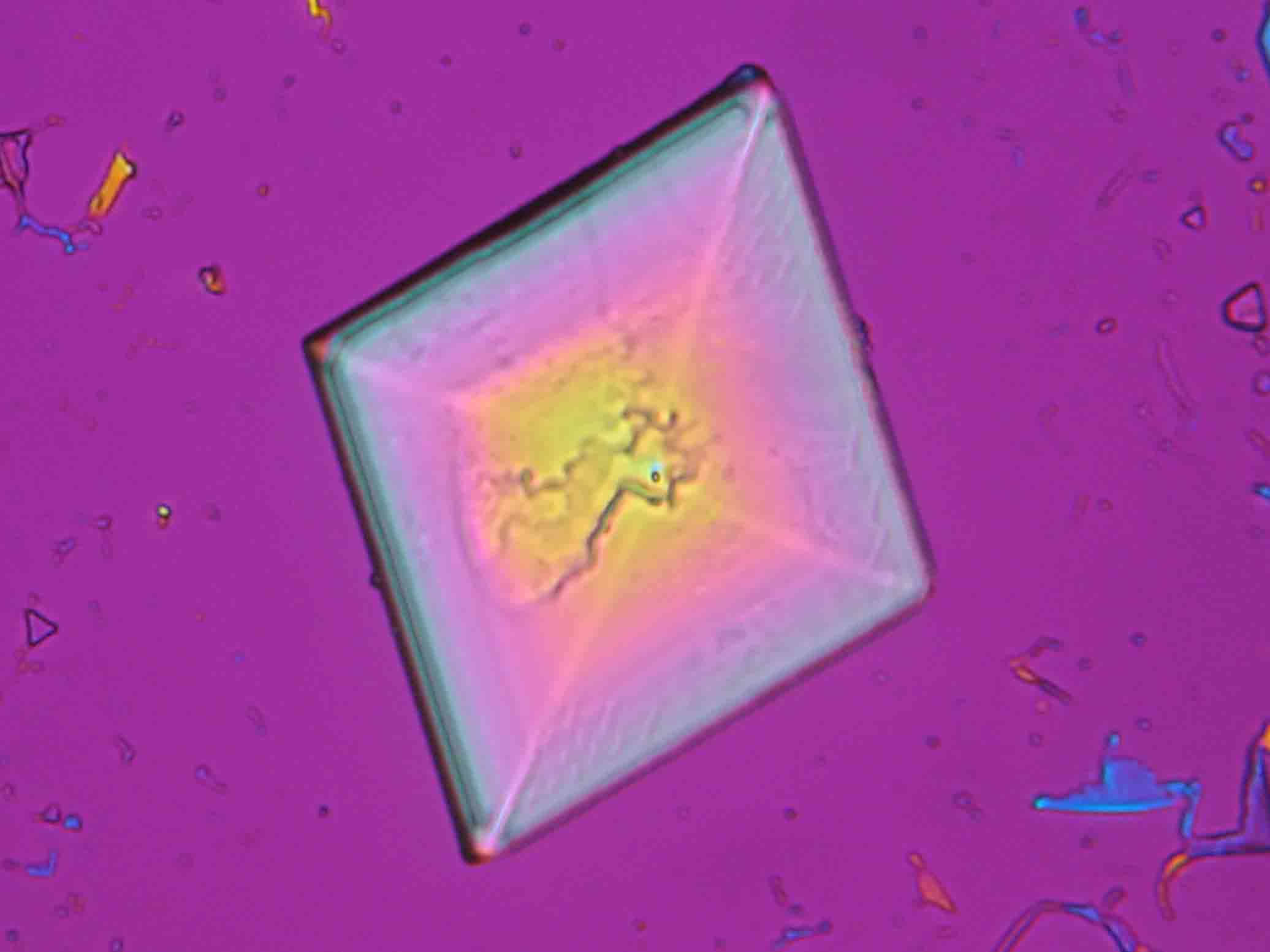
| |
| Mineralogical name | Nitrokalite, Niter, Kalisalpeter |
| Chemical name | Potassium nitrate |
| Trivial name | Saltpetre , Nitrate of potash, Vesta powder, Kali-Salpeter, Kehrsalpeter, Konversionssalpeter |
| Chemical formula | KNO3 |
| Other forms | none |
| Crystal system | orthorhombic |
| Crystal structure | orthorhombic - dipyramidal; 2/m 2/m 2/m , see [4] |
| Deliquescence humidity 20°C | 93.7 % |
| Solubility (g/l) at 20°C | 3.108 mol/kg |
| Density (g/cm³) | 2.103 g/cm3 |
| Molar volume | 48.04 cm3/mol |
| Molar weight | 101.10 g/mol |
| Transparency | translucent to transparent |
| Cleavage | very good on {001}; good on {010}h[5] |
| Crystal habit | include crusts and acicular crystals formed as efflorescence on cave and mine walls [6] |
| Twinning | |
| Phase transition | |
| Chemical behavior | easily soluble in water |
| Comments | |
| Crystal Optics | |
| Refractive Indices | α = 1.335 β = 1.505 γ = 1.506 |
| Birefringence | Δ = 0.171 |
| Optical Orientation | biaxial negative |
| Pleochroism | |
| Dispersion | weak, r < v |
| Used Literature | |
| [Steiger.etal:2014]Title: Weathering and Deterioration Author: Steiger, Michael; Charola A. Elena; Sterflinger, Katja  [Robie.etal:1978]Title: Thermodynamic properties of minerals and related substances at 298.15 K and 1 bar pressure and higher temperatures [Robie.etal:1978]Title: Thermodynamic properties of minerals and related substances at 298.15 K and 1 bar pressure and higher temperaturesAuthor: Robie R.A., Hemingway B.S.; Fisher J.A. 
| |
Abstract[edit]
Niter is one of the most important salts responsible for damages of building materials and murals. It is mostly observed indoors, often found in cotton-like efflorescence. Pictures, microphotographs and examples of their habits illustrate and complement the description.
General[edit]
Potassium nitrate was an important ingredient in the production of gun powder and explosives in the 19th century, were obtained from natural sources potash deposits contain a maximum of 10% KNO3 among various other potassium salts) and obtained through the reaction of sodium nitrate with potassium chloride. Currently various methods of large-scale production of this salt are based on the reaction between crude potassium salts and nitric acid.
Potassium nitrate is also used as a fertilizer in agriculture.
Occurrence of Niter[edit]
Natural accumulations of potassium nitrate can occur anywhere where nitrogen compounds are synthesized in presence of a sufficient quantity of potassium ions (for example during the decomposition of organic matter). Large quantities of nitrifying bacteria and nitrogen compounds are known to be present in manure and urine of living organisms. Large deposits of potassium and sodium nitrate, called "salitre" in Spanish, are found in the desert region of Atacama, nothern Chile, which have been exploited since the 19th century.
Information on the origin and formation of Niter on monuments[edit]
Contaminated water at the base of monuments is the major input source of both potassium and nitrate ions, the latter having a biogenic origin, such as nitrifying bacteria. These ions will be transported into the material via capillarity. Nitrate ions can also be deposited from atmospheric pollution. Once within the porous system of the material, creep of the formed salt will also contribute to its redistribution. In addition, building and restoration materials can also contain soluble potassium compounds. We can also mention potassium silicate, potassium hydroxide (used as a cleaning agent)and cements.
Solution behavior[edit]
Potassium nitrate has a high water solubility, belonging to the group of mobile salts. It can be associated with frequent changes in the accumulation zones in the porous material. The temperature effect on the water solubility is strong, which is reflected in the steep curve in figure 1.
A consequence of this is the danger of solution supersaturation during rapid temperature drop, and a subsequent crystallization of the salt.
Hygroscopicity[edit]
In the temperature range of 0°C up to 30°C the deliquescence humidity of potassium nitrate lies always above 90% RH and the temperature dependence is more or less linear. Under the influence of foreign ions the deliquescence humidity is shifted towards lower values.
| 0°C | 5°C | 10°C | 20°C | 30°C | 40°C |
| 97.0% RH | 95.5% RH | 93.7% RH | 91.5% RH | 88.9% RH | 85.9% RH |
Niter and damages caused by niter in the image[edit]
On objects[edit]
Under the polarizing microscope[edit]
- KNO<sub
Under the scanning electron microscope[edit]
Weblinks[edit]
- ↑ http://webmineral.com/data/Niter.shtml gelesen 28.07.2010
- ↑ http://www.mindat.org/min-2917.html
- ↑ http://www.mineralienatlas.de/lexikon/index.php/MineralData?mineral=Niter
- ↑ http://webmineral.com/jpowd/JPX/jpowd.php?target_file=Niter.jpx; Viewed on 15/04/2011
- ↑ ttp://en.wikipedia.org/wiki/Niter; Viewed on 15/04/2011
- ↑ http://www.galleries.com/minerals/carbonat/niter/niter.htm; Viewed on 15/04/2011
Literature[edit]
| [Mainusch:2001] | Mainusch, Nils (2001): Erstellung einer Materialsammlung zur qualitativen Bestimmung bauschädlicher Salze für Fachleute der Restaurierung, Diplomarbeit, HAWK Hochschule für angewandte Wissenschaft und Kunst Hildesheim/Holzminden/Göttingen, file:Diplomarbeit Nils Mainusch.pdf |   |
| [Robie.etal:1978] | Robie R.A., Hemingway B.S.; Fisher J.A. (1978): Thermodynamic properties of minerals and related substances at 298.15 K and 1 bar pressure and higher temperatures. In: U.S. Geol. Surv. Bull, 1452 () |  |
| [Steiger.etal:2014] | Steiger, Michael; Charola A. Elena; Sterflinger, Katja (2014): Weathering and Deterioration. In: Siegesmund S.; Snethlage R. (eds.): Stone in Architecture, Springer Verlag Berlin Heidelberg, 223-316, 10.1007/978-3-642-45155-3_4. |  |
| [Vogt.etal:1993] | Vogt, R.; Goretzki, Lothar (1993): Der Einfluss hygroskopischer Salze auf die Gleichgewichtsfeuchte und Trocknung anorganischer Baustoffe, unveröffentlichter Bericht. |  |
